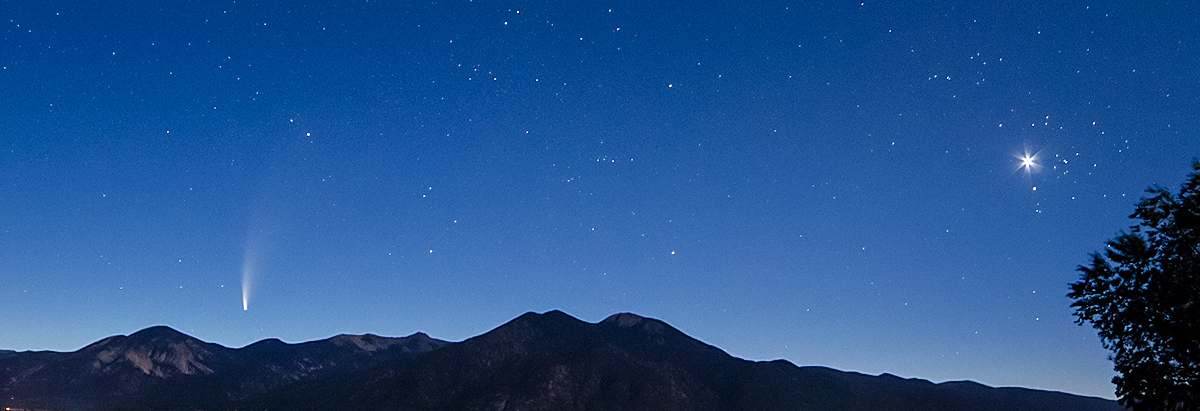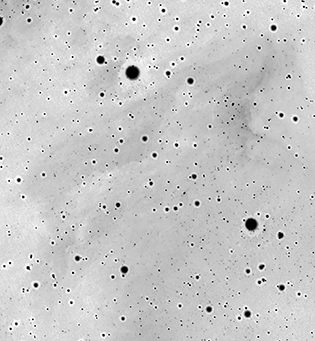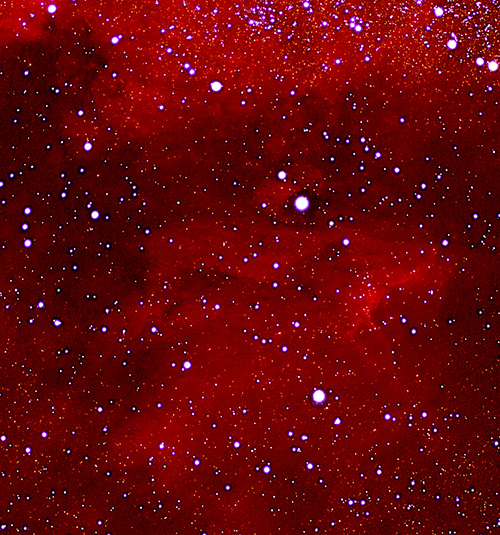
Welcome to taosastronomer.com!
offering
local "hands-on" observing
(visual and imaging) sessions and instruction
viewing and imaging from Rabbit Valley Observatory
a dark sky location on the mesa just west of Taos, NM
Pelican (IC5070) and North America(n) (NGC7000) and associated star clusters and nebulae -- informational page |
from "Sky and Telescope Magazine," October 2004 -- Sue French's descriptive and informative article on visual observation of the North America(n) / Pelican Nebulae in her continuing iconic series "Deep Sky Wonders" -- "The North America Nebula, NGC 7000 or Caldwell 20, is certainly easy to locate. Just point your telescope to a spot in the sky about one-quarter of the way from 3.7-magnitude Xi (ξ) Cygni to Deneb. This will put you in the region of the celestial Gulf of Mexico. Be sure to use your lowest-power eyepiece. The nebula spans more than 2°, giving small telescopes a decided advantage. Even with modern eyepieces, large telescopes never show a wide enough field of view and must display the nebula a piece at a time." |
 |
the above image is a negative, cropped image from Willis Greiner's original Pelican and North America(n) Nebulae astrophotograph -- note it's resemblance to Sue French's drawing directly left and then above right image inset -- Pelican Nebula lower right corner |
"The pencil sketch (b&w inset above) was made from the view through my 4.1-inch (105-millimeter) refractor (note that RVO's photographic refractor is an 80mm instrument) at 17×. It shows the entire North America Nebula as well as the soft glow of IC 5070, the Pelican Nebula, off its East Coast (which lies westward on the sky). I’m often asked if the nebulae really look like this drawing. The answer is yes — if you view them the way they were sketched, in the dark with a dim red flashlight. Yet these nebulae aren’t difficult to see. I’ve shared this view with many folks at public star parties. Few have trouble seeing NGC 7000, and most can see IC 5070. A third nebula, shy by nature, occupies much of the field. Do you see it? The Gulf of Mexico and the space between the East Coast and the offshore Pelican are filled by the dark (obscuring) nebula LDN 935." "Although I didn’t try to sketch the wealth of stars that crowd the field, the view is impressive and even contains a few star clusters. NGC 6997 is the most obvious cluster within the confines of the North America Nebula. To me, it looks as though it’s been plunked down on the border between Ohio and West Virginia. Putting 4.8-magnitude 57 Cygni at the western edge of a low-power eyepiece field should bring NGC 6997 into view. My 4.1-inch scope at 17× displays a dusting of very faint stars. At 47×, it’s a pretty cluster, rich in faint stars, spanning 10′. Through my 10-inch reflector, I count 40 stars, mostly of magnitude 11 and 12. Many are arranged in two incomplete circles, one inside the other. Is NGC 6997 actually involved in the North America Nebula? It’s difficult to tell because the distances are poorly known. A journal article earlier this year puts NGC 6997 at around 2,500 light-years and adopts a value of approximately 3,300 light-years for the nebula. These figures are higher than those stated in many previous references. If valid, they identify the cluster as a foreground object." from "Sky and Telescope Magazine," October 2004 -- Sue French's descriptive and informative article on visual observation of the North America(n) / Pelican Nebulae in her continuing iconic series "Deep Sky Wonders" |
 |
Pelican (IC5070) and North America(n) Nebulae (NGC7000) and associated dark nebulae and star clusters in Cygnus (reference labels for identification) |
Pelican (IC5070) and associated dark nebulae and star clusters in Cygnus (cropped view/star57 in center, star cluster N6997 top edge center) |
[copyright Rabbit Valley Observatory/Willis Greiner, 2015 -- all rights reserved] |
(all content copyright 2015-2019 Willis Greiner Photography, all rights reserved)